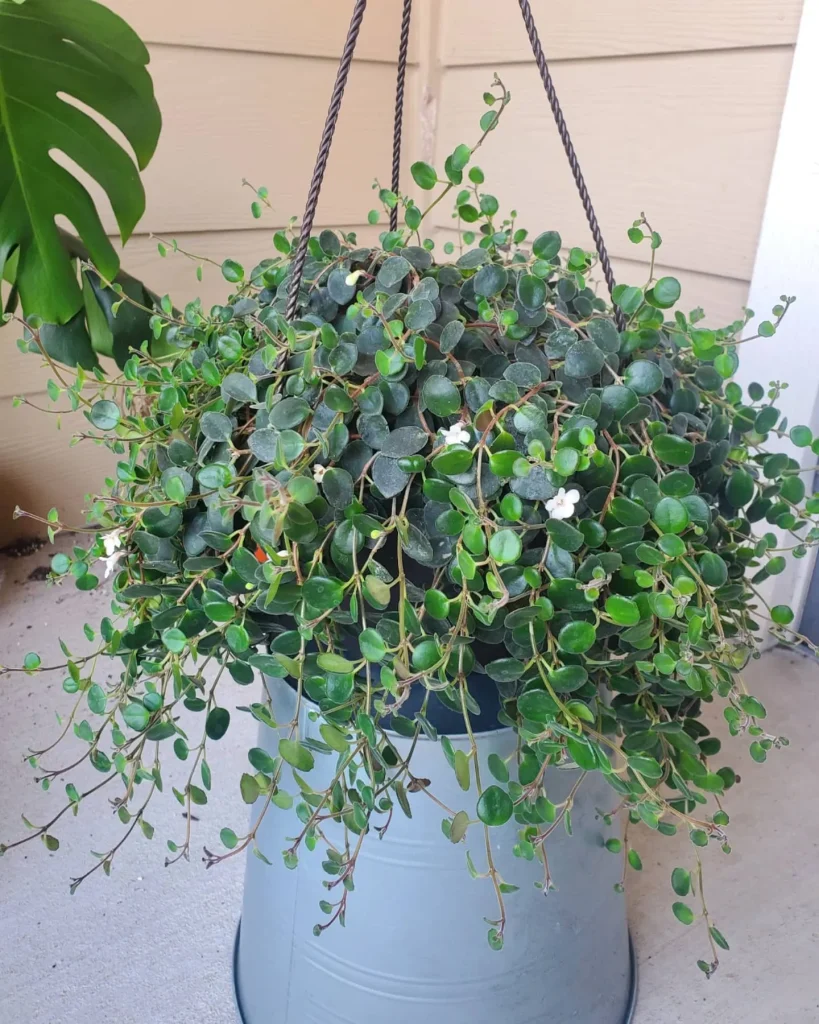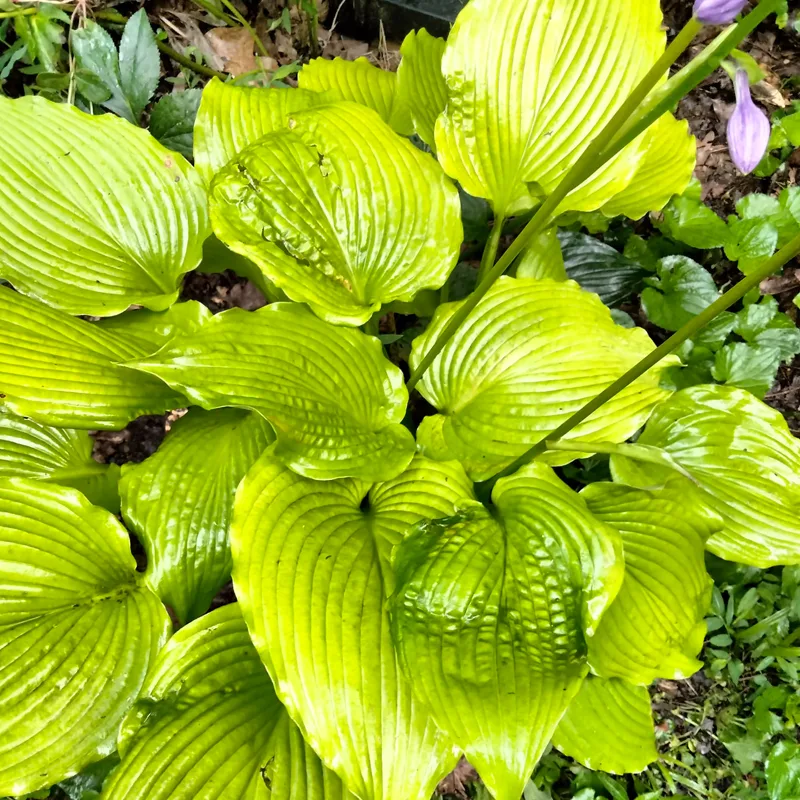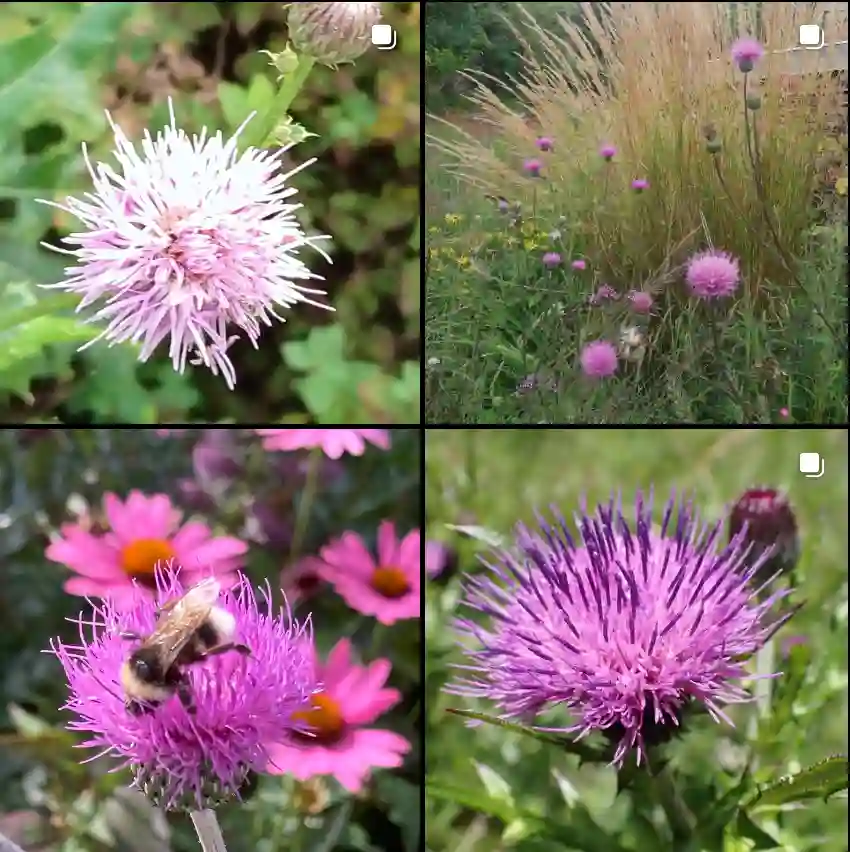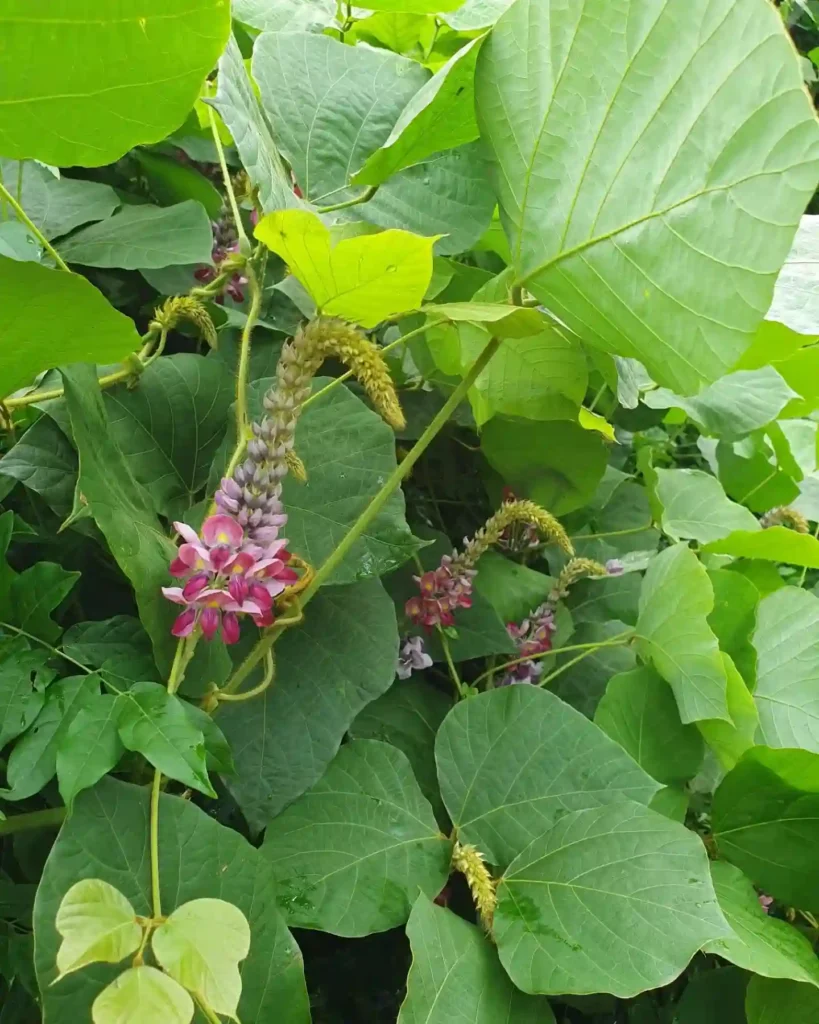FAQs About Pleurothallis Genus
Pleurothallis Genus has always intrigued me due to its vast diversity and unique characteristics. As an orchid lover, this genus stands out because of its peculiar, intricate blooms and fascinating range of species. In this article, I’ll dive into some common questions and provide insights based on my experience growing these beautiful orchids.
What Is the Pleurothallis?
Pleurothallis is a massive genus in the Orchidaceae family, comprising over 500 species. These orchids are primarily found in tropical regions, particularly in Central and South America. Their habitats vary from lowland forests to high-altitude cloud forests. The genus is known for its small to medium-sized plants and delicate flowers, often blooming on long, slender stems. They come in a range of colors, but they typically feature intricate and detailed blossoms. The flowers may be small, but they are captivating and intricate, offering something distinct from the more traditional, showy orchids.
Species List
- Pleurothallis abortiva Luer
- Pleurothallis acestrophylla Luer
- Pleurothallis acutidentata Cogn.
- Pleurothallis acutilabia Luer
- Pleurothallis adeleae Luer
- Pleurothallis adelphe Luer & Hirtz
- Pleurothallis adonis Luer
- Pleurothallis adventurae Karremans & Bogarín
- Pleurothallis aggeris Luer
- Pleurothallis aguirrei Luer & R.Escobar
- Pleurothallis alborosea (Kraenzl.) Porto & Brade
- Pleurothallis allenii L.O.Williams
- Pleurothallis alopex Luer
- Pleurothallis altimonile Luer & R.Escobar
- Pleurothallis alvaroi Luer & R.Escobar
- Pleurothallis alveolata Luer
- Pleurothallis ambyx Luer & R.Escobar
- Pleurothallis amentacea Luer & Toscano
- Pleurothallis amphigya Luer & R.Escobar
- Pleurothallis amplectens Luer
- Pleurothallis anceps Luer
- Pleurothallis andina (Schltr.) Luer
- Pleurothallis andreae Mark Wilson, B.T.Larsen & J.Portilla
- Pleurothallis andreaskayi Mark Wilson & B.T.Larsen
- Pleurothallis andreettae (Luer) J.M.H.Shaw
- Pleurothallis angustissima (Luer & Hirtz) J.M.H.Shaw
- Pleurothallis ankyloglossa Luer & Hirtz
- Pleurothallis annectens Luer
- Pleurothallis antennifera Lindl.
- Pleurothallis anthrax Luer & R.Escobar
- Pleurothallis anthurioides A.Doucette
- Pleurothallis apopsis Luer
- Pleurothallis aporosis Luer
- Pleurothallis applanata Luer & Dalström
- Pleurothallis arachnopsis H.G.Jones
- Pleurothallis archicolonae Luer
- Pleurothallis archidonae Lindl.
- Pleurothallis archidonopsis Luer & Hirtz
- Pleurothallis archilarum Chiron
- Pleurothallis arctata Luer
- Pleurothallis ariana-dayanae Vélez-Abarca, M.M.Jiménez & D.Gut.del Pozo
- Pleurothallis arietina Ames
- Pleurothallis ascera Luer & R.Escobar
- Pleurothallis aspergillum Luer & Hirtz
- Pleurothallis asplundii Luer
- Pleurothallis asteria K.W.Holcomb
- Pleurothallis asymmetrica (Kolan. & Szlach.) Karremans
- Pleurothallis atrohiata Dod
- Pleurothallis aurita C.Schweinf.
- Pleurothallis baccata (Luer) J.M.H.Shaw
- Pleurothallis baezensis (Luer & Hirtz) J.M.H.Shaw
- Pleurothallis bangii Rolfe ex Britton
- Pleurothallis barbata Westc.
- Pleurothallis barrowii Schuit.
- Pleurothallis batrachus Luer & Hirtz
- Pleurothallis baudoensis Luer & R.Escobar
- Pleurothallis belocardia Schltr.
- Pleurothallis bicallosa Luer & Hirtz
- Pleurothallis bicochlearis Luer
- Pleurothallis bicornis Lindl.
- Pleurothallis bicruris Lindl.
- Pleurothallis bilobulata M.M.Jiménez, Ocupa & Vélez-Abarca
- Pleurothallis biserrula Rchb.f.
- Pleurothallis bitumida Luer
- Pleurothallis bivalvis Lindl.
- Pleurothallis blepharopetala Schltr.
- Pleurothallis bogarinii Pupulin & J.D.Zuñiga
- Pleurothallis bothros Luer
- Pleurothallis bovilingua Luer & R.Escobar
- Pleurothallis bowmanni Rchb.f.
- Pleurothallis brachiata Luer
- Pleurothallis braidiana (Luer) Karremans
- Pleurothallis brittoniana Rolfe ex Britton
- Pleurothallis bucculenta Luer
- Pleurothallis bucranon Luer & Hirtz
- Pleurothallis bulbosa (Luer & R.Escobar) Pfahl
- Pleurothallis cachabensis Luer & Hirtz
- Pleurothallis cajamarcae Schltr.
- Pleurothallis calamifolia Luer & R.Escobar
- Pleurothallis calceolaris Rchb.f.
- Pleurothallis callifera C.Schweinf.
- Pleurothallis callosa M.Díaz & Pupulin
- Pleurothallis calogramma Luer
- Pleurothallis calolalax Luer & R.Escobar
- Pleurothallis calvariola Luer & R.Escobar
- Pleurothallis canaligera Rchb.f.
- Pleurothallis caniceps Luer
- Pleurothallis canidentis Luer & R.Escobar
- Pleurothallis capitonis Luer & R.Escobar
- Pleurothallis caprina Luer & R.Escobar
- Pleurothallis cardiochila L.O.Williams
- Pleurothallis cardiocrepis Rchb.f.
- Pleurothallis cardiophylax Rchb.f.
- Pleurothallis cardiostola Rchb.f.
- Pleurothallis cardiothallis Rchb.f.
- Pleurothallis carduela (Luer) J.M.H.Shaw
- Pleurothallis carmensotoana Mark Wilson & B.T.Larsen
- Pleurothallis carnosa Braid
- Pleurothallis carpishensis Ocupa, M.M.Jiménez & Mark Wilson
- Pleurothallis carrenoi Carnevali & I.Ramírez
- Pleurothallis cassidata Luer & R.Escobar
- Pleurothallis castanea Mark Wilson, G.Merino & J.D.Werner
- Pleurothallis catharinensis Cogn.
- Pleurothallis caucensis Mark Wilson
- Pleurothallis cauda-hirundinis Luer & J.Portilla
- Pleurothallis cauda-phocae Luer & Hirtz
- Pleurothallis cedrinorum Luer & Dalström
- Pleurothallis celsia Gal.-Tar. & J.S.Moreno
- Pleurothallis centranthera Lindl.
- Pleurothallis cernua Luer
- Pleurothallis chama Luer
- Pleurothallis chaparensis (Luer & R.Vásquez) J.M.H.Shaw
- Pleurothallis chavezii Luer
- Pleurothallis chicalensis M.M.Jiménez & Baquero
- Pleurothallis chloroleuca Lindl.
- Pleurothallis chuscalica Luer
- Pleurothallis circinata Luer
- Pleurothallis claudii Rchb.f. ex Dod
- Pleurothallis cleistogama Luer
- Pleurothallis cobriformis L.O.Williams
- Pleurothallis colossus Kraenzl. ex Kerch.
- Pleurothallis complanata Luer & Hirtz
- Pleurothallis compressa Luer
- Pleurothallis condorensis Luer & Hirtz
- Pleurothallis conformalis Luer & Dalström
- Pleurothallis conicostigma Luer
- Pleurothallis constricta Luer & R.Escobar
- Pleurothallis convexa Luer & Hirtz
- Pleurothallis cordata (Ruiz & Pav.) Lindl.
- Pleurothallis cordifolia Rchb.f. & H.Wagener
- Pleurothallis coriacardia Rchb.f.
- Pleurothallis cornualis Luer
- Pleurothallis correllii Luer
- Pleurothallis corysta Luer
- Pleurothallis cosmetron Luer
- Pleurothallis cottenii K.W.Holcomb
- Pleurothallis cotyligera Luer & R.Escobar
- Pleurothallis crateriformis C.Schweinf.
- Pleurothallis crescentilabia Ames
- Pleurothallis cristata (Barb.Rodr.) Cogn.
- Pleurothallis crocodiliceps Rchb.f.
- Pleurothallis crossota Luer & Dalström
- Pleurothallis crucifera Luer & Hirtz
- Pleurothallis cubitoria Luer
- Pleurothallis culpameae (Luer) J.M.H.Shaw
- Pleurothallis cultellifolis Barb.Rodr.
- Pleurothallis cunabularis Luer
- Pleurothallis curvifructa H.G.Jones
- Pleurothallis cutucuensis Luer
- Pleurothallis cuzcoensis (Luer) Karremans
- Pleurothallis cyanea Luer & R.Escobar
- Pleurothallis cymbiformis Dod
- Pleurothallis cymbisepala Schltr.
- Pleurothallis cypelligera Luer & Hirtz
- Pleurothallis dariensis (Kolan. & Szlach.) Bogarín
- Pleurothallis dasypetala Luer & Hirtz
- Pleurothallis davisii Luer & Endara
- Pleurothallis deflexa Luer
- Pleurothallis dejavu Luer & Hirtz
- Pleurothallis delascioi Carnevali & I.Ramírez
- Pleurothallis demissa Luer & R.Vásquez
- Pleurothallis dentipetala Rolfe ex Ames
- Pleurothallis depressa Luer & R.Escobar
- Pleurothallis deuterodriessenii J.M.H.Shaw
- Pleurothallis deuterowerneri J.M.H.Shaw
- Pleurothallis dewildei Luer & R.Escobar
- Pleurothallis diabolica Luer & R.Escobar
- Pleurothallis diazii (Luer & Endara) J.M.H.Shaw
- Pleurothallis dibolia Luer
- Pleurothallis dichotoma (Poepp. & Endl.) Schltr.
- Pleurothallis dilemma Luer
- Pleurothallis discoidea Lindl.
- Pleurothallis divaricans Schltr.
- Pleurothallis dorotheae Luer
- Pleurothallis dorrii Luer
- Pleurothallis doucetteana L.E.Matthews
- Pleurothallis dracuncula (Luer & Hirtz) J.M.H.Shaw
- Pleurothallis dressleriana Bogarín
- Pleurothallis drewii Luer
- Pleurothallis driessenii Luer
- Pleurothallis dubbeldamii Luer
- Pleurothallis dukei Luer
- Pleurothallis dunstervillei Foldats
- Pleurothallis duplex Luer & R.Escobar
- Pleurothallis eccentrica Luer & Hirtz
- Pleurothallis ecomingae M.M.Jiménez, Baquero & Mark Wilson
- Pleurothallis eduardoi Mark Wilson
- Pleurothallis eidos Luer
- Pleurothallis ekmanii Schltr.
- Pleurothallis elvirana Carnevali & I.Ramírez
- Pleurothallis ensata Luer
- Pleurothallis epiglottis Luer
- Pleurothallis equipedites K.W.Holcomb
- Pleurothallis erythrium Luer
- Pleurothallis escobarii (Luer) J.M.H.Shaw
- Pleurothallis eumecocaulon Schltr.
- Pleurothallis excavata Schltr.
- Pleurothallis excentrica (Luer) Luer
- Pleurothallis fantastica Ames
- Pleurothallis fastidiosa Luer
- Pleurothallis flaveola Luer & Hirtz
- Pleurothallis flavomarginata A.Doucette, H.Medina & J.Portilla
- Pleurothallis folsomii (Luer & Endara) J.M.H.Shaw
- Pleurothallis fonnegrae (Luer & Endara) J.M.H.Shaw
- Pleurothallis forceps-cancri Luer & R.Escobar
- Pleurothallis fossulata Luer & R.Escobar
- Pleurothallis franciana Sierra-Ariza
- Pleurothallis fugax Luer & R.Escobar
- Pleurothallis furcifera Luer
- Pleurothallis fustifera Luer
- Pleurothallis galerita Luer
- Pleurothallis ganymedes Luer & R.Escobar
- Pleurothallis garayana (Ospina) Luer
- Pleurothallis gargantua Luer
- Pleurothallis genychila Schltr.
- Pleurothallis geographica Luer
- Pleurothallis gigiportillae A.Doucette & J.Portilla
- Pleurothallis giraffa Luer
- Pleurothallis giraldoi Luer
- Pleurothallis glabra Luer & R.Escobar
- Pleurothallis globosa Luer & R.Escobar
- Pleurothallis glochis Luer & R.Escobar
- Pleurothallis glossopogon Rchb.f.
- Pleurothallis gomezii Luer & R.Escobar
- Pleurothallis gonzaleziorum Pupulin, M.Díaz & Pridgeon
- Pleurothallis gonzaloi J.S.Moreno, Rinc.-González & Gal.-Tar.
- Pleurothallis gracilicolumna Mark Wilson
- Pleurothallis gracilipedunculata Foldats
- Pleurothallis grandiflora Lindl.
- Pleurothallis grandilingua Pupulin, M.Díaz & Pridgeon
- Pleurothallis gratiosa Rchb.f.
- Pleurothallis grobleri (Luer & Hirtz) J.M.H.Shaw
- Pleurothallis gustavoi Mark Wilson
- Pleurothallis gutierrezii Luer
- Pleurothallis gymnastica K.W.Holcomb
- Pleurothallis habenula Luer & R.Escobar
- Pleurothallis hammelii Luer
- Pleurothallis harpago Luer
- Pleurothallis hartwegii Lindl.
- Pleurothallis hawkingii Karremans & J.E.Jiménez
- Pleurothallis hawkinsii (Luer & Endara) J.M.H.Shaw
- Pleurothallis helleri A.D.Hawkes
- Pleurothallis hemileuca Luer
- Pleurothallis hemisphaerica Luer & R.Escobar
- Pleurothallis henniae Luer & Dalström
- Pleurothallis hippocrepica Luer & R.Escobar
- Pleurothallis hirtziana J.M.H.Shaw
- Pleurothallis hispidula (Luer & R.Escobar) J.M.H.Shaw
- Pleurothallis hitchcockii Ames
- Pleurothallis hjertingii Luer
- Pleurothallis hoeijeri Luer & Hirtz
- Pleurothallis holtonii Luer
- Pleurothallis homalantha Schltr.
- Pleurothallis homeroi (Luer & Endara) J.M.H.Shaw
- Pleurothallis imbaburae Luer & Hirtz
- Pleurothallis imber-florum Luer & R.Escobar
- Pleurothallis imitor Luer
- Pleurothallis imperialis Luer
- Pleurothallis inaudita Zambrano & Solano
- Pleurothallis incongrua Luer
- Pleurothallis indecora Rodr.-Mart. & Karremans
- Pleurothallis index Luer
- Pleurothallis inflata Rolfe
- Pleurothallis inornata Luer & Hirtz
- Pleurothallis instar Luer
- Pleurothallis ipyrangana Schltr.
- Pleurothallis iris (Luer & Endara) J.M.H.Shaw
- Pleurothallis isthmica Luer
- Pleurothallis jacarepaguaensis Barb.Rodr.
- Pleurothallis jaculifera Luer & R.Escobar
- Pleurothallis jaramilloi Luer
- Pleurothallis jostii Mark Wilson & J.Portilla
- Pleurothallis jupiter Luer
- Pleurothallis juvenilis Rodr.-Mart. & Karremans
- Pleurothallis karlii Pabst
- Pleurothallis × karremansiana Pupulin, J.Aguilar & M.Díaz
- Pleurothallis kashi-menkakarai Mashendo-Jimb., Vélez-Abarca & M.M.Jiménez
- Pleurothallis kaynagata A.Doucette, Mark Wilson & J.Portilla
- Pleurothallis kellogiae Archila
- Pleurothallis kelsoae Mark Wilson, B.T.Larsen & J.Portilla
- Pleurothallis killipii Garay
- Pleurothallis knappiae Luer
- Pleurothallis lacera Luer
- Pleurothallis lacrima K.W.Holcomb
- Pleurothallis lamellaris Lindl.
- Pleurothallis languida Luer & R.Escobar
- Pleurothallis lapoi M.M.Jiménez & Vélez-Abarca
- Pleurothallis latipetala Garay
- Pleurothallis lemniscifolia Luer
- Pleurothallis lenae Luer & Dalström
- Pleurothallis leopardina Luer
- Pleurothallis leucantha Schltr.
- Pleurothallis lilijae Foldats
- Pleurothallis lindenii Lindl.
- Pleurothallis linearis (Lindl.) Lindl.
- Pleurothallis linguifera Lindl.
- Pleurothallis liripipia K.W.Holcomb
- Pleurothallis litotes Luer
- Pleurothallis llanganatensis (Luer & Hirtz) J.M.H.Shaw
- Pleurothallis lobata Luer
- Pleurothallis loejtnantii Luer
- Pleurothallis londonoi Luer
- Pleurothallis longipedicellata Ames & C.Schweinf.
- Pleurothallis longipetala Bogarín & Belfort
- Pleurothallis lopezii Luer & R.Escobar
- Pleurothallis loranthophylla Rchb.f.
- Pleurothallis loreae Carnevali & I.Ramírez
- Pleurothallis luctuosa Rchb.f.
- Pleurothallis lueriana Karremans & Rodr.-Mart.
- Pleurothallis luna-crescens Pupulin, J.Aguilar & Mel.Fernández
- Pleurothallis lunaris Luer & R.Escobar
- Pleurothallis lutheri (Luer & Endara) J.M.H.Shaw
- Pleurothallis lynniana (Luer) Pfahl
- Pleurothallis macra Lindl.
- Pleurothallis macrocardia Rchb.f.
- Pleurothallis macrophylla Kunth
- Pleurothallis madsenii Luer
- Pleurothallis maduroi Luer
- Pleurothallis magnifica Luer & R.Escobar
- Pleurothallis magnipetala C.Schweinf.
- Pleurothallis mahechae J.S.Moreno, Sierra-Ariza & L.Pina
- Pleurothallis mammillata Luer
- Pleurothallis manicosa Luer & R.Escobar
- Pleurothallis manningiana Mark Wilson, Salas Guerr. & B.T.Larsen
- Pleurothallis marioandresavilae Vélez-Abarca & M.M.Jiménez
- Pleurothallis marioi Zambrano & Solano
- Pleurothallis mark-wilsonii J.S.Moreno, Gal.-Tar. & Sierra-Ariza
- Pleurothallis marthae Luer & R.Escobar
- Pleurothallis mastodon Luer & Hirtz
- Pleurothallis matudana C.Schweinf.
- Pleurothallis medinae Luer & J.Portilla
- Pleurothallis medusa Luer
- Pleurothallis megaglossa Luer & Dalström
- Pleurothallis megalorhina Luer & R.Escobar
- Pleurothallis megalotis Luer & Hirtz
- Pleurothallis melanosticta Luer
- Pleurothallis membracidoides Luer
- Pleurothallis mesopotamica Bogarín & Belfort
- Pleurothallis micklowii Luer & R.Vásquez
- Pleurothallis microcardia Rchb.f.
- Pleurothallis microchila L.O.Williams
- Pleurothallis millei Schltr.
- Pleurothallis miniatura (Luer, Thoerle & F.Werner) J.M.H.Shaw
- Pleurothallis minutilabia Mark Wilson, Tobar & Á.J.Pérez
- Pleurothallis miranda Luer
- Pleurothallis mocoana Schltr.
- Pleurothallis mundiflorae K.W.Holcomb
- Pleurothallis mundula Luer & R.Escobar
- Pleurothallis muriculata Luer & Hirtz
- Pleurothallis nanella Luer & Hirtz
- Pleurothallis nangaritzae M.M.Jiménez, Tobar & Mark Wilson
- Pleurothallis narinoensis Rykacz. & Kolan.
- Pleurothallis nasiterna Luer
- Pleurothallis navilinguis Rchb.f.
- Pleurothallis navisepala Pupulin, J.Aguilar & M.Díaz
- Pleurothallis neglecta Pupulin, Bogarín & Mel.Fernández
- Pleurothallis nelsonii Ames
- Pleurothallis neobarbosae J.M.H.Shaw
- Pleurothallis neodubbeldamii J.M.H.Shaw
- Pleurothallis neorinkei A.Doucette
- Pleurothallis neossa (Luer & Hirtz) J.M.H.Shaw
- Pleurothallis nephroglossa Schltr.
- Pleurothallis nipterophylla Luer
- Pleurothallis nitida Luer
- Pleurothallis niveoglobula Luer
- Pleurothallis nossax Luer & R.Escobar
- Pleurothallis notabilis Luer & R.Escobar
- Pleurothallis nox-media Luer & R.Escobar
- Pleurothallis nuda (Klotzsch) Rchb.f.
- Pleurothallis nutans Schltr.
- Pleurothallis obpyriformis Luer
- Pleurothallis octavioi Luer & R.Escobar
- Pleurothallis odobeniceps Luer
- Pleurothallis omoglossa Luer
- Pleurothallis onagriceps Luer & Hirtz
- Pleurothallis oncoglossa Luer
- Pleurothallis orecta Luer & R.Escobar
- Pleurothallis ortegae Luer & Hirtz
- Pleurothallis orthostachys Luer & R.Escobar
- Pleurothallis orygmoglossa (Luer & Dressler) J.M.H.Shaw
- Pleurothallis oscarii Archila & Chiron
- Pleurothallis ottocarii Rodr.-Mart., Rinc.-Useche & Karremans
- Pleurothallis oxapampae Luer
- Pleurothallis pallida Luer
- Pleurothallis palliolata Ames
- Pleurothallis pandurata Luer & Hirtz
- Pleurothallis pansamalae Schltr.
- Pleurothallis papillingua A.Doucette & J.Portilla
- Pleurothallis paquishae Luer
- Pleurothallis paraniesseniae J.M.H.Shaw
- Pleurothallis × parentis-certa Pupulin & Bogarín
- Pleurothallis parviflora Luer
- Pleurothallis peculiaris Luer
- Pleurothallis pedunculata (Klotzsch) Rchb.f.
- Pleurothallis pelex Luer
- Pleurothallis pelicophora Luer
- Pleurothallis penduliflora Kraenzl.
- Pleurothallis penelops Luer
- Pleurothallis penicillata Luer
- Pleurothallis perfusa K.W.Holcomb
- Pleurothallis perijaensis Dunst.
- Pleurothallis peroniocephala Luer
- Pleurothallis perryi Luer
- Pleurothallis persimilis Luer & Hirtz
- Pleurothallis petroana Sierra-Ariza
- Pleurothallis phalangifera (C.Presl) Rchb.f.
- Pleurothallis phoxophylla Luer
- Pleurothallis phratria Luer & Hirtz
- Pleurothallis phyllocardia Rchb.f.
- Pleurothallis phyllocardioides Schltr.
- Pleurothallis phymatodea Luer
- Pleurothallis pileata Luer & R.Escobar
- Pleurothallis platypetala Luer & R.Escobar
- Pleurothallis platysepala Schltr.
- Pleurothallis poculifera Luer & R.Escobar
- Pleurothallis polysticta Luer
- Pleurothallis portillae Luer
- Pleurothallis praecipua Luer
- Pleurothallis prolaticollaris Luer
- Pleurothallis pruinosa Lindl.
- Pleurothallis pseudopogon Luer & Hirtz
- Pleurothallis pseudosphaerantha K.W.Holcomb
- Pleurothallis ptychophora Luer & Hirtz
- Pleurothallis pudica Pupulin, J.Aguilar & M.Díaz
- Pleurothallis pugio Karremans & J.E.Jiménez
- Pleurothallis pulcherrima Luer
- Pleurothallis pulvinaris Luer & R.Escobar
- Pleurothallis punctulata Rolfe
- Pleurothallis pyelophera (Luer) Pfahl
- Pleurothallis quadricaudata Schltr.
- Pleurothallis quadrifida (Lex.) Lindl.
- Pleurothallis quaternaria Luer
- Pleurothallis queremalensis Rinc.-Useche, Rodr.-Mart. & Karremans
- Pleurothallis questionis Luer & R.Escobar
- Pleurothallis quitu-cara M.Carrera & Baquero
- Pleurothallis radula Luer
- Pleurothallis ramificans Luer
- Pleurothallis ramiromedinae Thoerle & Hirtz
- Pleurothallis ramosii Luer
- Pleurothallis rectipetala Ames & C.Schweinf.
- Pleurothallis recurvata Luer & Hirtz
- Pleurothallis reginae Garay
- Pleurothallis renieana (Luer & Sijm) J.M.H.Shaw
- Pleurothallis reptans Luer
- Pleurothallis restrepioides Lindl.
- Pleurothallis revoluta (Ruiz & Pav.) Garay
- Pleurothallis rhinocera (Luer & Sijm) J.M.H.Shaw
- Pleurothallis rhodoglossa Schltr.
- Pleurothallis rikseniana Mark Wilson & B.T.Larsen
- Pleurothallis ringens C.Schweinf.
- Pleurothallis ripleyi Luer
- Pleurothallis robusta (Luer & Hirtz) J.M.H.Shaw
- Pleurothallis roseola Luer & Hirtz
- Pleurothallis rowleei Ames
- Pleurothallis ruberrima Lindl.
- Pleurothallis rubrifolia Mark Wilson, Tobar & Salas Guerr.
- Pleurothallis rubroinversa Luer
- Pleurothallis rugosa Luer & R.Escobar
- Pleurothallis rusbyi Rolfe
- Pleurothallis ruscaria Luer
- Pleurothallis ruscifolia (Jacq.) R.Br.
- Pleurothallis rutrifolia (Luer & Hirtz) J.M.H.Shaw
- Pleurothallis sabanillae M.M.Jiménez & Vélez-Abarca
- Pleurothallis saccatilabia C.Schweinf.
- Pleurothallis sagittilabia Luer
- Pleurothallis saltatoria Lindl.
- Pleurothallis sanchoi Ames
- Pleurothallis sandemanii Luer
- Pleurothallis sanjanae Schltr.
- Pleurothallis sanluisii Foldats
- Pleurothallis sannio Luer & R.Escobar
- Pleurothallis sarcochila Garay
- Pleurothallis saueri (Luer) J.M.H.Shaw
- Pleurothallis scabrilinguis Lindl.
- Pleurothallis scaphipetala Luer
- Pleurothallis schweinfurthii Garay
- Pleurothallis scintillata Luer
- Pleurothallis scoparum Rchb.f.
- Pleurothallis scotinantha Pupulin, M.Díaz & J.Aguilar
- Pleurothallis scurrula Luer
- Pleurothallis secunda Poepp. & Endl.
- Pleurothallis semiscabra Lindl.
- Pleurothallis sergioi Luer & R.Escobar
- Pleurothallis serpens Luer & R.Escobar
- Pleurothallis serricardia Schltr.
- Pleurothallis serrisepala Kraenzl.
- Pleurothallis setosa C.Schweinf.
- Pleurothallis sextonii Luer
- Pleurothallis sigynes Luer
- Pleurothallis sijmii Luer
- Pleurothallis silvae-pacis Karremans
- Pleurothallis silverstonei Luer
- Pleurothallis simacoana Schltr.
- Pleurothallis simulans L.O.Williams
- Pleurothallis siphoglossa Luer & R.Escobar
- Pleurothallis sirene Rchb.f.
- Pleurothallis sobrina Luer & Hirtz
- Pleurothallis solaris K.W.Holcomb
- Pleurothallis solium Luer
- Pleurothallis solomonii (Luer) J.M.H.Shaw
- Pleurothallis somnolenta Luer
- Pleurothallis sotarae Schltr.
- Pleurothallis spathulifolia C.Schweinf.
- Pleurothallis spathulipetala Luer
- Pleurothallis sphaerantha Luer
- Pleurothallis stelidilabia Luer
- Pleurothallis stellata I.Ramírez & Carnevali
- Pleurothallis stenota Luer
- Pleurothallis stevensonii Luer
- Pleurothallis steyermarkii C.Schweinf.
- Pleurothallis stricta Luer
- Pleurothallis strobilifera F.Lehm. & Kraenzl.
- Pleurothallis subreniformis Schltr.
- Pleurothallis subsinuata Lindl.
- Pleurothallis subtilis C.Schweinf.
- Pleurothallis × subversa Pupulin & Bogarín
- Pleurothallis suiniana D.Aguilar & Karremans
- Pleurothallis superbiens Luer
- Pleurothallis supervacanea Rchb.f.
- Pleurothallis suspensa Luer
- Pleurothallis talpinaria Rchb.f.
- Pleurothallis talpinarioides Garay & Dunst.
- Pleurothallis tamaensis Foldats
- Pleurothallis tandapiensis (Luer & Hirtz) J.M.H.Shaw
- Pleurothallis tanyrhina Luer & R.Escobar
- Pleurothallis tapantiensis Pupulin, M.Díaz & Pridgeon
- Pleurothallis taurus Luer
- Pleurothallis teaguei Luer
- Pleurothallis tectosa Luer & Hirtz
- Pleurothallis tectosepala K.W.Holcomb
- Pleurothallis telamon Luer
- Pleurothallis tenebrosa Luer
- Pleurothallis tentaculata (Poepp. & Endl.) Lindl.
- Pleurothallis tenuisepala Mark Wilson
- Pleurothallis tetrachaeta Luer & Hirtz
- Pleurothallis tetragona Luer & R.Escobar
- Pleurothallis tetroxys Luer
- Pleurothallis thoerleae (Luer) J.M.H.Shaw
- Pleurothallis tiarata Luer & Hirtz
- Pleurothallis tinajillensis M.M.Jiménez, H.Garzón & Vélez-Abarca
- Pleurothallis tipuloides Luer
- Pleurothallis titan Luer
- Pleurothallis tobarii (Luer & Hirtz) Pfahl
- Pleurothallis tomtroutmanii K.W.Holcomb
- Pleurothallis tonduzii Schltr.
- Pleurothallis torrana Luer
- Pleurothallis trachysepala Kraenzl.
- Pleurothallis tragulosa Luer & Hirtz
- Pleurothallis transversilabia Carnevali & I.Ramírez
- Pleurothallis tridentata Klotzsch
- Pleurothallis trifurcata Luer & Hirtz
- Pleurothallis trimeroglossa Schltr.
- Pleurothallis tripterocarpa Schltr.
- Pleurothallis troglodytes Luer
- Pleurothallis truncata Lindl.
- Pleurothallis tryssa Luer
- Pleurothallis tuberculosa Luer & Hirtz
- Pleurothallis tuzae Luer
- Pleurothallis tyria Luer & Hirtz
- Pleurothallis undulata Poepp. & Endl.
- Pleurothallis uninervia Luer & Dodson
- Pleurothallis upanoensis Luer & Hirtz
- Pleurothallis urceolata Luer
- Pleurothallis uvifera Luer & R.Escobar
- Pleurothallis valladolidensis Luer
- Pleurothallis valvola Luer & Hirtz
- Pleurothallis variabilis Luer
- Pleurothallis veliformis Luer & Dalström
- Pleurothallis verruculosa Kraenzl.
- Pleurothallis vide-vallis Karremans & J.E.Jiménez
- Pleurothallis viduata Luer
- Pleurothallis vieirae Luer & R.Escobar
- Pleurothallis villahermosae Sierra-Ariza, Rinc.-González & Villanueva
- Pleurothallis vinealis Luer & R.Escobar
- Pleurothallis volans Luer & Hirtz
- Pleurothallis volcanica Luer
- Pleurothallis vorator Luer & R.Vásquez
- Pleurothallis whitteniana Mark Wilson & B.T.Larsen
- Pleurothallis wielii Mark Wilson, B.T.Larsen & J.Portilla
- Pleurothallis wigginsii C.Schweinf.
- Pleurothallis xanthochlora Rchb.f.
- Pleurothallis zarumae Luer & Hirtz
How to Care for Pleurothallis Orchids?
Pleurothallis orchids require particular care to thrive. The key to success is replicating their natural, humid environment. Here are the essential care tips:
- Light: Pleurothallis prefers low to medium indirect light. Direct sunlight can scorch the leaves, so I always keep mine in a shaded spot or filtered light.
- Watering: These orchids like consistent moisture. I water mine regularly, making sure the potting medium is moist but not waterlogged. Since they love humidity, misting the plants helps maintain the necessary humidity levels.
- Temperature and Humidity: Being from tropical and subtropical environments, they thrive in warm temperatures (65-80°F) with high humidity (above 60%). I find that keeping them in a terrarium or near a humidifier helps a lot.
- Potting Medium: Use a well-draining medium like sphagnum moss or a fine bark mix. Good air circulation around the roots is crucial to prevent rot.
- Fertilizing: A diluted, balanced orchid fertilizer applied monthly during the growing season keeps them healthy and encourages blooms.
How to Propagate Pleurothallis?
Propagation of Pleurothallis is usually done by division. Here’s how I go about it:
- Choose a healthy plant: Ensure the plant you plan to divide is mature and healthy. I wait until my Pleurothallis has filled its pot before attempting division.
- Dividing the plant: Gently remove the plant from its pot and separate the root mass. Ensure that each division has at least two or three healthy pseudobulbs and some roots attached.
- Repotting: Repot each division into its own pot with fresh, well-draining medium. Water them lightly to settle the roots, and place them in a humid environment to help them establish.
What Are Common Problems with Pleurothallis?
Even with the best care, Pleurothallis can face a few challenges. In my experience, these are the most common:
- Root Rot: Overwatering or poor drainage can cause root rot. To prevent this, I make sure the potting medium stays moist but not soggy. If root rot happens, trimming off affected roots and repotting in fresh medium often solves the problem.
- Pests: Pleurothallis orchids can attract pests like aphids, mealybugs, and spider mites. Regularly inspecting the leaves and flowers helps catch infestations early. I typically wipe down the leaves with a damp cloth and use insecticidal soap if necessary.
- Yellowing Leaves: Yellow leaves can indicate too much direct sunlight or inconsistent watering. I adjust the light and water levels accordingly to prevent leaf burn or stress.
How Does Pleurothallis Compare to Other Orchids?
Pleurothallis is often confused with other genera in the Orchidaceae family, such as Masdevallia or Dracula orchids, due to their similar growing conditions and small, intricate flowers. However, Pleurothallis species typically have more understated blooms, with their flowers being less dramatic in appearance compared to the more showy Masdevallia.
One key difference is the leaf structure. Pleurothallis tends to have elongated, slender leaves, while Masdevallia and Dracula orchids often have wider, more prominent foliage.
Is Pleurothallis Toxic?
Based on my research, Pleurothallis is not known to be toxic to humans or pets. However, like many orchids, they are not typically ingested, and it’s always wise to keep plants out of reach of pets and small children just to be safe.
What to Plant with Pleurothallis?
Pleurothallis orchids pair well with other humidity-loving tropical plants. In my collection, I like to group them with ferns, mosses, or small bromeliads. This not only replicates their natural environment but also helps maintain the humidity levels they need to thrive. Additionally, I find that grouping them with other moisture-loving orchids like Masdevallia and Dracula species can create an aesthetically pleasing display.
What Are the Benefits of Growing Pleurothallis?
Pleurothallis orchids offer several benefits, both aesthetically and environmentally. Their unique and intricate flowers provide a distinct beauty to any orchid collection. I love the diversity within the genus, as there is always something new to discover.
Additionally, Pleurothallis species contribute to biodiversity, particularly in orchid conservation. Growing and propagating these plants can help preserve species that may be threatened in their natural habitats due to deforestation and climate change.
Conclusion
Pleurothallis Genus may not be as well-known as other orchids, but it holds a special place in my collection. Its small yet intricate flowers and unique care requirements make it a rewarding challenge for any orchid enthusiast. Whether you’re new to orchids or an experienced grower, I believe Pleurothallis is worth adding to your collection for the beauty, diversity, and satisfaction it brings.
If i die, water my plants!



